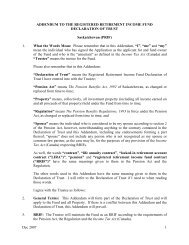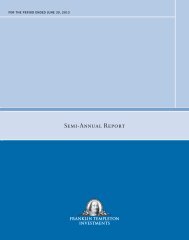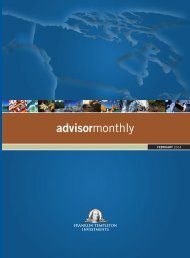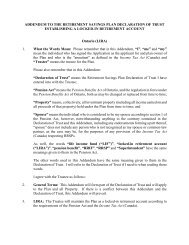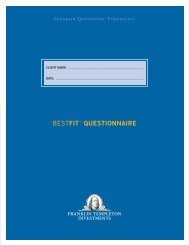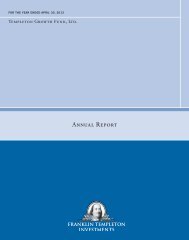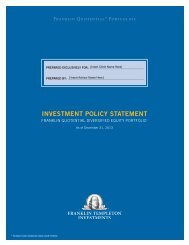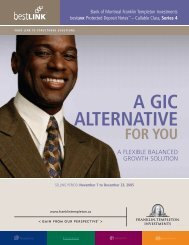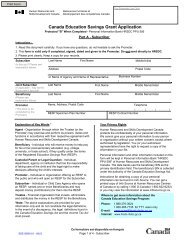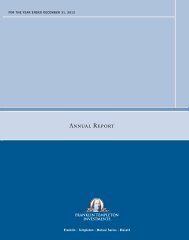Company held interest-rate swap agreements to reduce the fixed interest-rate exposure of certain loansreceivable of the banking/finance segment. These instruments are economic hedges with changes in theirfair value recognized in earnings in other, net revenue.The Company may also enter into equity swap agreements to mitigate market valuation risks related tosecurities the Company holds that are carried at fair value and investments held by majority-ownedsponsored investment products that the Company consolidates. These instruments are economic hedges withchanges in their fair value recognized in earnings in other income, net.Loans Held for Sale consist of retail installment loan sale contracts held for sale in securitizationtransactions. The contracts are secured by new and used automobiles purchased from motor vehicle dealers.The loans held for sale are carried at the lower of cost or estimated fair value in the aggregate. Netunrealized losses are recognized through a valuation allowance included in other, net revenue. The fairvalue of automobile loans held for sale generally is estimated based on the whole loan market price thatwould be received if the loans were sold in their current condition, which may include adjustments based onthe composition of the loan portfolio and liquidity factors. As a result of recent economic conditions,observable whole loan prices for comparable portfolios of automobile loans sold have not been readilyavailable. Therefore, the fair value currently is determined by using discounted cash flow analyses withestimated discount rates for loans with similar terms and collateral. Accordingly, automobile loans held forsale currently are classified as Level 3.Loans Receivable, Net. The banking/finance group offers retail banking, private banking and consumerlending services. The Company accrues interest on loans using the effective interest method. The majorityof retail and private banking loans carry variable interest rates, which are adjusted periodically. Theconsumer lending loans carry fixed interest rates. Loans receivable are carried at cost, net of the allowancefor loan losses. For disclosure purposes, the fair value of loans receivable is estimated using discounted cashflow models with interest rates that consider the current credit and interest rate risks inherent in the loansand the current economic and lending conditions. For certain loans with no significant credit concerns andfrequent repricing, estimated fair values are generally based on the carrying value.Allowance for Loan Losses. An allowance for loan losses on the Company’s retail banking, privatebanking and consumer lending portfolios (collectively, “loan portfolios”) is maintained at a level sufficientto absorb probable losses inherent in the loan portfolios. Probable losses are estimated for the loanportfolios based on contractual delinquency status and historical loss experience. The allowance on the loanportfolios is based on aggregated portfolio segment evaluations, generally by loan type, and reflects theCompany’s judgment of portfolio risk factors such as economic conditions, bankruptcy trends, product mix,geographic concentrations and other similar items. A loan is charged to the allowance for loan losses whenit is deemed probable to be uncollectible, taking into consideration the value of the collateral, the financialcondition of the borrower and other factors. Recoveries on loans previously charged-off as uncollectible arecredited to the allowance for loan losses.Loans past due 90 days or more are reviewed individually to determine whether they are collectible. Ifwarranted, after considering collateral level and other factors, loans 90 days past due are placed onnon-accrual status. Interest collections on non-accrual loans for which the ultimate collectibility of principalis uncertain are applied as principal reductions; otherwise, such collections are credited to income whenreceived.The Company has not recorded an allowance for loan losses on its private banking loans. These loansgenerally are payable on demand and are fully secured by assets under its control or subject to rights ofoffset. Consistent with past experience, no losses are anticipated on these loans.76
Deferred Sales Commissions. Sales commissions paid to broker/dealers and other investment advisersin connection with the sale of shares of the Company’s funds sold without a front-end sales charge arecapitalized as deferred sales commission assets (“DCA”). The DCA is amortized over the estimated periodin which it will be recovered from distribution plan fees or from contingent deferred sales charges, generallyover 12 months to eight years, depending on share class.The Company evaluates DCA for recoverability on a periodic basis using undiscounted cash flowsexpected to be generated from the related distribution plan fees and contingent deferred sales charges. Theseevaluations involve the use of estimates and assumptions, including expected future market levels, averageassets under management and shareholder redemption rates.Property and Equipment are recorded at cost and are depreciated using the straight-line method overtheir estimated useful lives which range from three to 35 years. Expenditures for repairs and maintenanceare charged to expense when incurred. The Company amortizes leasehold improvements using the straightlinemethod over their estimated useful lives or the lease term, whichever is shorter.Internal and external costs incurred in connection with developing or obtaining software for internaluse are capitalized and amortized over the estimated useful life of the software of three years beginningwhen the software project is complete and the application is put into production.The Company tests property and equipment for impairment when there is an indication that thecarrying amount of the asset may not be recoverable. Carrying values are not recoverable when theundiscounted cash flows estimated to be generated by those assets are less than their carrying value. Ifassets are determined to not be recoverable, impairment losses are measured based on the excess, if any, ofthe carrying value of these assets over their respective fair value. Fair value is determined by discountedfuture cash flows models, appraisals or other applicable methods.Goodwill and Other Intangible Assets. Goodwill represents the excess cost of a business acquisitionover the fair value of the net assets acquired. Intangible assets consist primarily of mutual fund managementcontracts and customer base assets resulting from business acquisitions. The Company amortizes intangibleassets over their estimated useful lives which range from seven to 15 years using the straight-line method,unless the asset is determined to have an indefinite useful life. Indefinite-lived intangible assets primarilyrepresent contracts to manage mutual fund assets for which there is no foreseeable limit on the contractperiod.Goodwill is tested for impairment annually and when an event occurs or circumstances change thatmore likely than not reduce the fair value of a reporting unit below its carrying amount. Historically, theCompany completed the annual goodwill impairment test as of October 1 of each fiscal year. During fiscalyear 2009, the Company changed the annual impairment test date from October 1 to August 1 of each year.The Company believes the August 1 date better aligns the annual goodwill impairment test with the budgetdata developed in connection with the budgeting process that takes place in July and August. In addition,the annual impairment test will be completed during the fourth fiscal quarter using the most recent financialinformation such that the results will better reflect the fiscal year being reported. This change to the date ofthe annual goodwill impairment test constitutes a change in the method of applying an accounting principle.The Company believes that this change in accounting principle is preferable and filed a letter ofpreferability from its independent registered public accounting firm regarding this change in accountingprinciple as an exhibit to the Form 10-Q for the quarter ended March 31, 2009.The goodwill impairment test involves a two-step process. The first step requires the identification ofthe reporting units, and comparison of the fair value of each of these reporting units to the respectivecarrying value. If the carrying value is less than the fair value, no impairment exists and the second step is77
- Page 1 and 2:
G A I N F R O M O U R P E R S P E C
- Page 3 and 4:
Letter to StockholdersGregory E. Jo
- Page 5 and 6:
LETTER TO STOCKHOLDERSHaving announ
- Page 7 and 8:
Directors and OfficersDirectorsChar
- Page 9 and 10:
Performance GraphThe following perf
- Page 11 and 12:
(MARK ONE)UNITED STATESSECURITIES A
- Page 14 and 15:
operational and other services requ
- Page 16 and 17:
A. Assets Under Management (“AUM
- Page 18 and 19:
60 days. If agreements representing
- Page 20 and 21:
Similar arrangements exist with the
- Page 22 and 23:
We generally operate our institutio
- Page 24 and 25:
Franklin Templeton Variable Insuran
- Page 26 and 27:
CATEGORY(and approximate amount of
- Page 28 and 29:
The following table sets forth the
- Page 30 and 31:
Korea; the Commission de Surveillan
- Page 32 and 33:
COMPETITIONThe financial services i
- Page 34 and 35:
or other efforts successfully stabi
- Page 36 and 37: and, consequently, we are incurring
- Page 38 and 39: such as information, systems and te
- Page 40 and 41: like our business, is based in part
- Page 42 and 43: orrowing costs and limit our access
- Page 44 and 45: director of various subsidiaries of
- Page 46 and 47: PART IIItem 5. Market for Registran
- Page 48 and 49: OverviewWe are a global investment
- Page 50 and 51: Net income decreased in fiscal year
- Page 52 and 53: Investment Management Fee RateThe f
- Page 54 and 55: accounts closed in a calendar year
- Page 56 and 57: Information Systems, Technology and
- Page 58 and 59: Our investments in sponsored invest
- Page 60 and 61: At September 30, 2009, we had $355.
- Page 62 and 63: Off-Balance Sheet ArrangementsAs of
- Page 64 and 65: The fair value of retained subordin
- Page 66 and 67: Indefinite-lived intangible assets
- Page 68 and 69: the position will be sustained upon
- Page 70 and 71: Selected Quarterly Financial Data (
- Page 72 and 73: The following is a summary of the e
- Page 74 and 75: Item 8.Financial Statements and Sup
- Page 76 and 77: REPORT OF INDEPENDENT REGISTERED PU
- Page 78 and 79: CONSOLIDATED BALANCE SHEETS(dollars
- Page 80 and 81: CONSOLIDATED STATEMENTS OF STOCKHOL
- Page 82 and 83: CONSOLIDATED STATEMENTS OF CASH FLO
- Page 84 and 85: Fair Value Measurements. The Compan
- Page 88 and 89: not performed. If the carrying valu
- Page 90 and 91: Accumulated Other Comprehensive Inc
- Page 92 and 93: acquisition cost was allocated to t
- Page 94 and 95: FHLB borrowings and amounts availab
- Page 96 and 97: The Company recognized other-than-t
- Page 98 and 99: The changes in Level 3 assets measu
- Page 100 and 101: Changes in the allowance for loan l
- Page 102 and 103: Company sold retained subordinated
- Page 104 and 105: Certain of the goodwill and intangi
- Page 106 and 107: At September 30, 2009, maturities o
- Page 108 and 109: The components of the net deferred
- Page 110 and 111: At September 30, 2009, the banking/
- Page 112 and 113: Total assets under management of in
- Page 114 and 115: Stock OptionsThe following table su
- Page 116 and 117: The following tables summarize info
- Page 118 and 119: Operating revenues of the banking/f
- Page 120 and 121: minimum Tier 1 and Total risk-based
- Page 122 and 123: PART IIIItem 10. Directors, Executi
- Page 124 and 125: Item 15.(a)(1)(a)(2)(a)(3)PART IVEx
- Page 126 and 127: Exhibit No.Description10.17 Represe
- Page 128 and 129: Exhibit No.Description12 Computatio
- Page 130 and 131: Exhibit No.DescriptionEXHIBIT INDEX
- Page 132 and 133: Exhibit No.Description10.22 Amendme
- Page 134 and 135: (dollars in thousands)COMPUTATION O
- Page 136 and 137:
NameState or Nation ofIncorporation
- Page 138 and 139:
CONSENT OF INDEPENDENT REGISTERED P
- Page 140 and 141:
EXHIBIT 31.2CERTIFICATIONI, Kenneth
- Page 142 and 143:
CERTIFICATION PURSUANT TO 18 U.S.C.
- Page 144:
One Franklin ParkwaySan Mateo, CA 9



